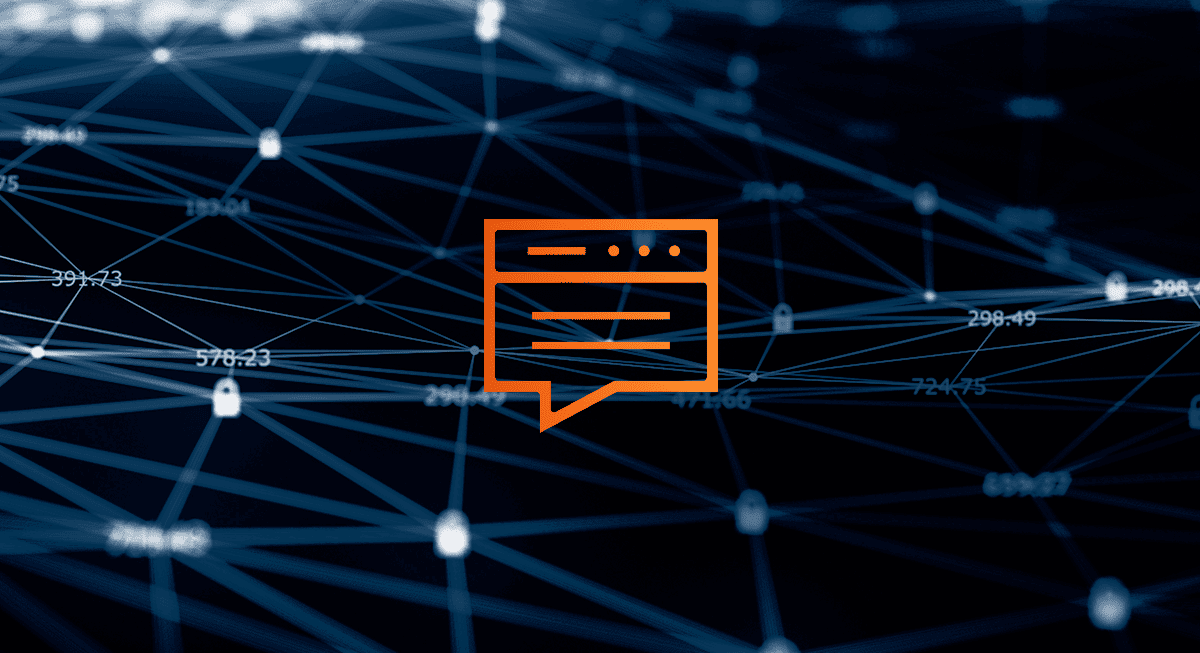Back in 2013, Gartner’s Anton Chuvakin set out to name a new set of security solutions to detect suspicious activity on endpoints.
After what he called, “a long agonising process that involved plenty of conversations with vendors, enterprises, and other analysts,” Chuvakin came up with this phrase: endpoint threat detection and response.
Since then, this moniker has been shortened to endpoint detection and response or EDR. But as the name got smaller, the market got bigger. Not only has the market exploded and advanced, but new, next-generation variations such as extended detection and response (XDR) and managed endpoint detection and response (Managed EDR) have grown and almost taken over what was once the leading detection and response solution.
EDR is even evolving beyond the endpoint itself, with a recent study by Gartner® claiming, “By 2025, 60% of EDR solutions will include data from multiple security control sources, such as identity, cloud access security brokers (CASBs), and data loss prevention (DLP).”
With that in mind, let’s take a step back and assess EDR’s place in your overall cybersecurity strategy.
What Is EDR Security?
Endpoint detection and response (EDR) security is a branch of cybersecurity focused on visibility and investigation of endpoint activity and potential threats on the endpoint.
Gartner® defines the security solution as one that “records and stores endpoint-system-level behaviours, uses various data analytics techniques to detect suspicious system behaviour, provides contextual information, blocks malicious activity, and provides remediation suggestions to restore affected systems.”
It’s important not to confuse EDR with endpoint protection platform (EPP) solutions. The two are closely related, but not interchangeable. EPP refers to multiple technologies (like antivirus software) meant to protect a network’s endpoint from cyber threats like malware. EDR, however, is focused on monitoring the endpoints and offers threat detection, investigation, and response. They are two pieces that work together to better protect the endpoint.
It’s common for organisations to use both EDR and an endpoint solution like EPP. In fact, according to The State of Cybersecurity, 2024 Trends, 66% of organisations are currently using one or more next-generation endpoint security tools within their networks, and 87% of environments are currently using two or more unique endpoint vendor solutions.
How Does EDR Security Work?
EDR is focused on visibility and threat response and offers up the most important data points organisations need to know about the various endpoints in their network. An effective EDR tool allows security teams to focus on detecting and investigating suspicious activities on endpoints, allowing for faster, more effective responses. EDR allows organisations to focus on proactive cybersecurity, taking in and acting on data around their endpoints before a threat escalates.
EDR works by installing a lightweight agent, called an endpoint agent, on endpoints within the organization. The agent monitors 24×7, looking for any activity that is potentially malicious or matches a known attack indicator. EDR then sends telemetry to a central management system, which automatically performs analysis and correlation before sending an alert.
From there, an analyst investigates the alert to determine if the attack is false or actionable. If real, they can gather details about the attack and, based on this information, develop an appropriate response. Having this response capability is what differentiates EDR from other endpoint-focused security solutions.
All attacks land on an endpoint eventually, which is what makes this kind of solution table stakes for any organisation’s cybersecurity strategy, across industries and maturity levels.
While EDR features vary, most include the ability to isolate the host system from the rest of the network to prevent the attack from spreading to other endpoints in the environment.
In addition to isolation capabilities, some EDR vendors offer advanced or active responses, such as terminating processes.

The Value of EDR Solutions
As mentioned above, the endpoint is a top target for threat actors. If they can reach the endpoint, they can launch malware, ransomware, or other attacks. It also gives them massive amounts of access to an organisation. This makes EDR security not only beneficial, but essential for organisations looking to improve their cybersecurity.
EDR security has a few components that make it unique from other detection solutions, including:
- Automatically detecting endpoint threats
- Utilising advanced technology to constantly monitor endpoints
- Working proactively to prevent major breaches
Additional benefits of EDR solutions include:
1. Visibility. Visibility is critical not only for being able to understand vulnerabilities or threats within a security environment, but for assessment and action. Real-time visibility helps an organisation act against malicious threats before major damage occurs.
2. Behavioural protection. Unlike tools that only monitor for known threats, EDR can identify new, suspicious activity and flag it as a possible threat for the IT or security team. Many EDR solutions now employ machine learning (ML) or artificial intelligence (AI) to better understand user and system behaviour patterns to make threat identification more precise.
3. Insight and context. Insight is as critical as visibility. To further the security journey, an organisation needs to understand where threats are coming from and why they need to harden their endpoints and overall environment. Insight and context also help at the moment of attack, allowing an organisation to tailor their response to a threat’s specific characteristics.
4. Remediation speed. If an organisation can quickly identify a threat and respond accordingly, that speeds up remediation — accelerating the investigation and limiting breach damage. It also allows an organisation to “stop a threat” instead of “responding to an incident,” meaning it can shut down suspicious behaviour or a threat actor trying to make initial access versus having to respond to a full-blown cyber attack where lateral movement and escalation has possibly occurred.
Issues With EDR Solutions
EDR detects abnormal activity on endpoints — assuming those devices are running EDR agents — which gives you a better chance of detecting malware strains or more advanced attacks. However, this detail can add complexity to the solution — a facet particularly problematic for small and medium-sized enterprises (SMEs), which often lack the in-house security expertise to manage EDR solutions. Before SMEs can correctly wield EDR solutions and the telemetry they provide, they need security engineers who know how to tap into these solutions’ full potential.
In-house engineers, or an IT team that can handle setting up and maintaining an EDR solution, are hard to come by for several reasons:
- Budget restraints, especially for SME’s
- Resource constraints — a small IT team that is already stretched thin
- Complex solutions that create alert fatigue, causing threats to be ignored or missed entirely
Visibility is another crucial issue when it comes to maintaining EDR solutions. The State of Cybersecurity: 2024 Trends survey and research found that 54% of environments have been unable to reach a complete deployment rate of endpoint agents. This inability to deploy and maintain endpoint agents obscures visibility, rendering EDR solutions insufficient. Additionally, 70% of respondents made the decision to remove or replace an endpoint solution within their networks within the last 12 months. These organisations listed a variety of reasons for changing course, including “could not justify cost,” “difficult to use,” “failure to detect alerts,” and “lack of required features,” all of which highlight the shortcomings of EDR.
This visibility issue stems back to the fact that EDR solutions are limited to the endpoint. While all attacks land on the endpoint, wouldn’t it be better to detect them before they escalate to that point?
Because EDR is designed to detect and enable a response on an endpoint device, ideally isolating or stopping the threat before it spreads to the larger network, if a threat doesn’t originate on an endpoint, EDR won’t be able to detect that threat. This leaves a gap in your attack surface and limits your visibility. Common attack tactics such as zero-day vulnerabilities, SQL injections, and of course, cloud attacks, will not be detected by EDR.
Because of emphasis on endpoint detection of threats, rather than proactive prevention, EDR alone will not guarantee that a threat is mitigated or even detected and can often put an organisation into a cycle of reacting to endpoint alerts instead of hardening their overall environment.
While endpoint detection and response solutions are still a cornerstone of cybersecurity, EDR alone cannot provide comprehensive coverage across an organisation’s environment. The recognition of the limitations of EDR has led to a growth in adoption of XDR and MDR solutions.
XDR vs. EDR
As EDR has evolved, a new player in the detection and response space has emerged, extended detection and response (XDR). As the name suggests, XDR goes beyond the endpoint, pulling in other sources of telemetry including network, users, and more (depending on the specific solution), to correlate alongside endpoint data. This gives an organization broader visibility, allowing them to make better threat detection and response decisions. EDR is a vital component of XDR, but only one part of it. XDR can also be native, which only draws upon the XDR provider’s portfolio, or open, leveraging multiple tools, vendors, and security telemetry sources to meet an organization’s needs.
These two models can change how complicated it is for your organization to monitor and act on alerts.
MDR vs. EDR
Managed detection and response (MDR) and EDR are not an “either/or” choice for organizations. Rather, EDR is a part of MDR, which utilizes the same features (threat hunting and detection) and expands it beyond endpoints to provide more comprehensive coverage across the IT environment, all while being managed by a third-party.
An MDR solution goes beyond endpoints to offer multi-dimensional monitoring of endpoint, network, identity, and cloud workloads. With this holistic oversight, organisations are better able to effectively identify and respond to threats no matter where they originate.
MDR also has a crucial “managed” component, which alleviates the burden on organisations of responding to alerts and escalated threats.
By having an external team that can monitor 24×7, investigate alerts, and help provide critical context, organisations save time and budget, and increase effective, rapid responses.
Learn more about the differences between various detection and response solutions.
Going Beyond EDR for Cybersecurity
As the cyber threat landscape advances and sophisticates, the fact is that EDR alone won’t solve an organisation’s security problems. It can’t monitor everything you need and can’t provide the expertise required to direct a response once a breach has been detected. If your organisation has specific regulatory or compliance requirements too, EDR will need to be supplemented by security that can tackle your entire environment and handle log retention, which EDR can’t achieve.
What you need is 360-degree visibility across endpoints your network and cloud environment, along with the necessary security expertise to help direct your response — you need security operations.
Security operation solutions such as those offered by Arctic Wolf provide:
- 24×7 monitoring of endpoints, network, cloud, and identity sources
- The ability to process trillions of events and filter through them, alerting organisations to only the most important
- Personal protection through continuous adaption of both technology and human support
- Broad visibility that works with existing technology stacks
Explore the Arctic Wolf Security Operations Cloud.
Learn more about MDR with A Security Leader’s Guide to Leveraging MDR for Security Maturity and Development.





